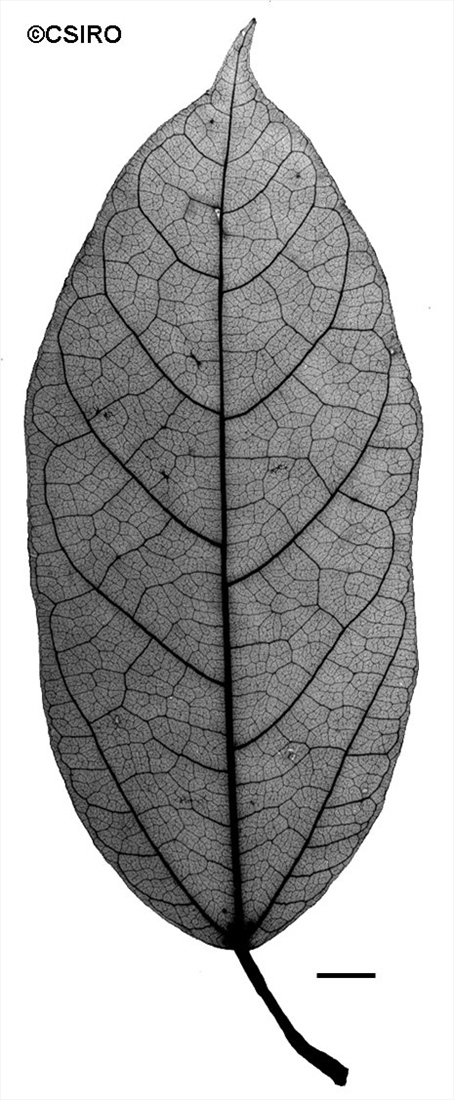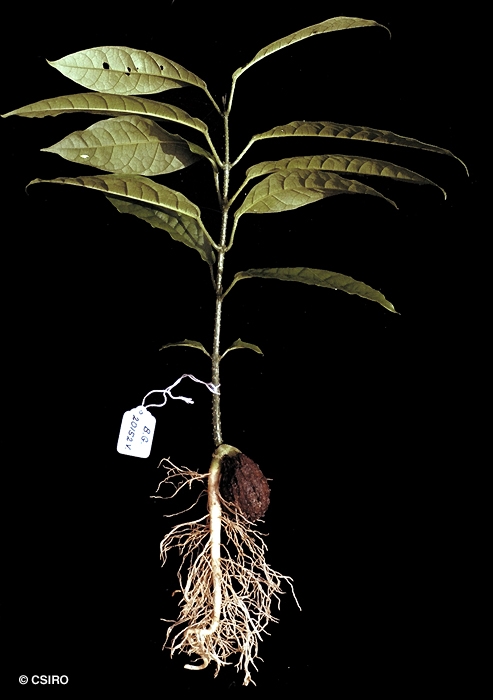Australian Tropical Rainforest Plants - Online edition
Oxera splendida (F.Muell.) Gateble & Barrabe









Barrabe, L.et al (2015) Botanical Journal of the Linnean Society 179: 707.
Latara; Vine, Glory; Buku; October Glory; Mumuni; Glory Vine; Pitutu
Vine stem diameters to 15 cm recorded. Living bark layer quite thick. Outer blaze very granular, inner blaze fibrous.
Leaf blades about 12-24 x 6-13 cm, petioles about 2-8 cm long. Flat glands usually visible on the underside near the base of the leaf blade in the axils of some of the lateral veins.
Flowers large, about 4.5 cm diam. Sepals 1.5-2.5 cm long. Corolla lobes about 1.5-2.5 x 1.5-2.5 cm, often lobed at the apex. Corolla tube about 2-4 cm long. Stamens exserted, filaments attached about the middle of the corolla tube, filaments about 3.5-6.5 cm long, hairy towards the base. Anthers about 3-4 mm long. Pollen white. Ovary globose, densely clothed in white hairs. Style about 5-8 cm long. Stigma terminal, minutely bifid. Ovules 1 per locule.
Fruits ellipsoidal, about 6-9 x 5-6 cm. Seeds about 4-4.5 x 2.5-3.5 cm. Cotyledons +/- lobed and interlocked, about 45 mm long. Radicle small and insignificant, about 1 mm long.
Usually 1-2 pairs of cataphylls produced before the first true leaves. First pair of leaves usually much smaller than the second pair of leaves. First leaf blades elliptic-ovate. At the tenth leaf stage: leaf blade elliptic, apex acuminate ending in a long drip tip, base cordate, midrib and lateral veins depressed on the upper surface. Upper surface of the leaf blade bullate. Numerous small, orbicular, crater-like glands visible in the lower surface. Taproot long and thickened. Seed germination time 14 days.
A food plant for the larval stages of the Pale Ciliate Blue, Common Tit, Common Oakblue and Eone Blue Butterflies. Common & Waterhouse (1981).
Faradaya splendida F.Muell. , Fragmenta Phytographiae Australiae 5: 21 (1865), Type: Queensland, Rockingham Bay, J. Dallachy; lecto: K; iso: MEL. Faradaya albertisii F.Muell., Descriptive Notes on Papuan Plants 8: 46 (1886), Type: On the Fly-River; Dalbertis.





